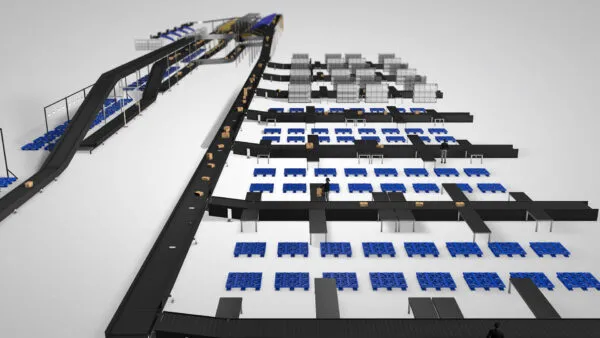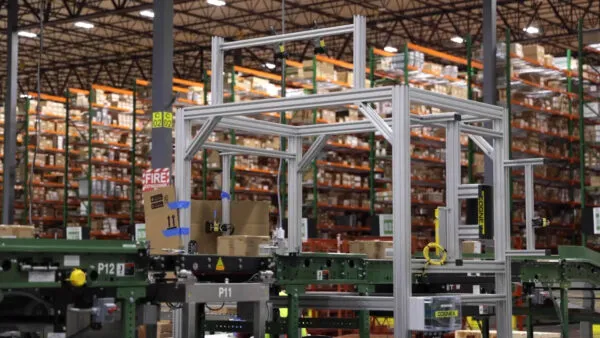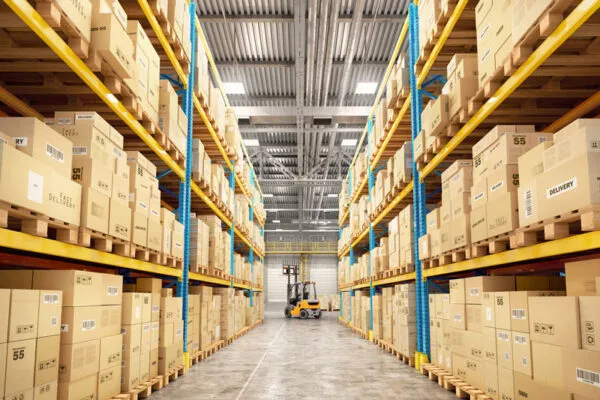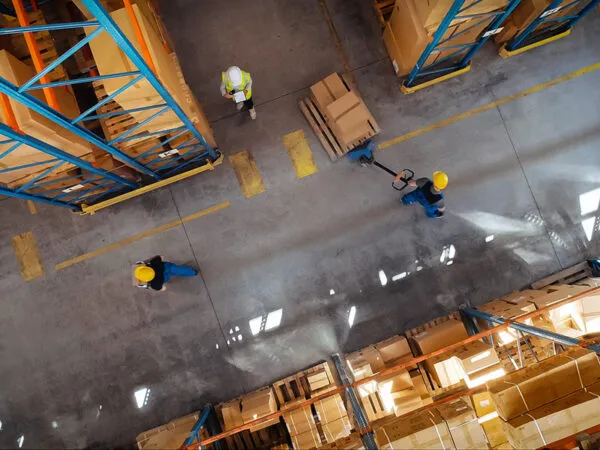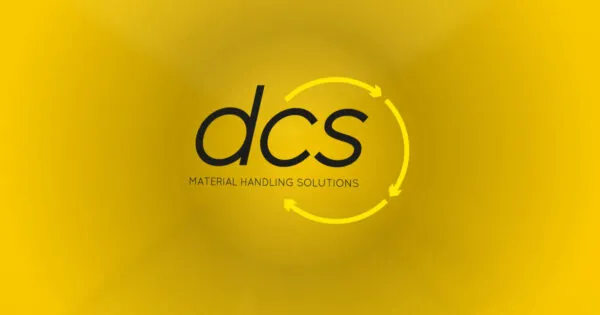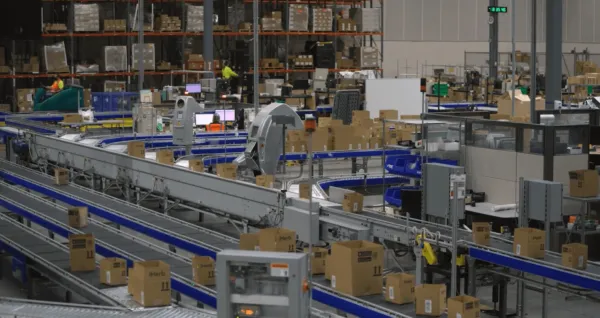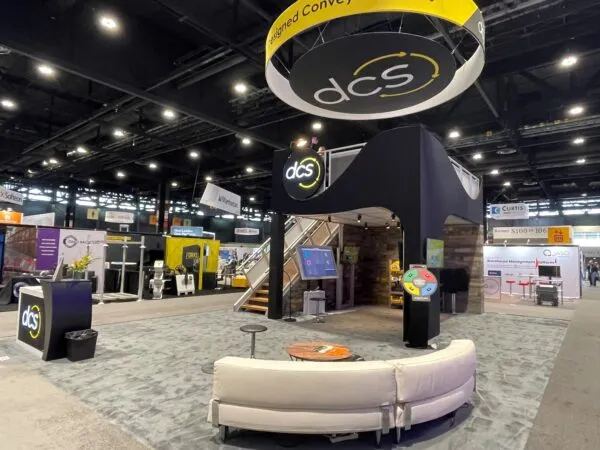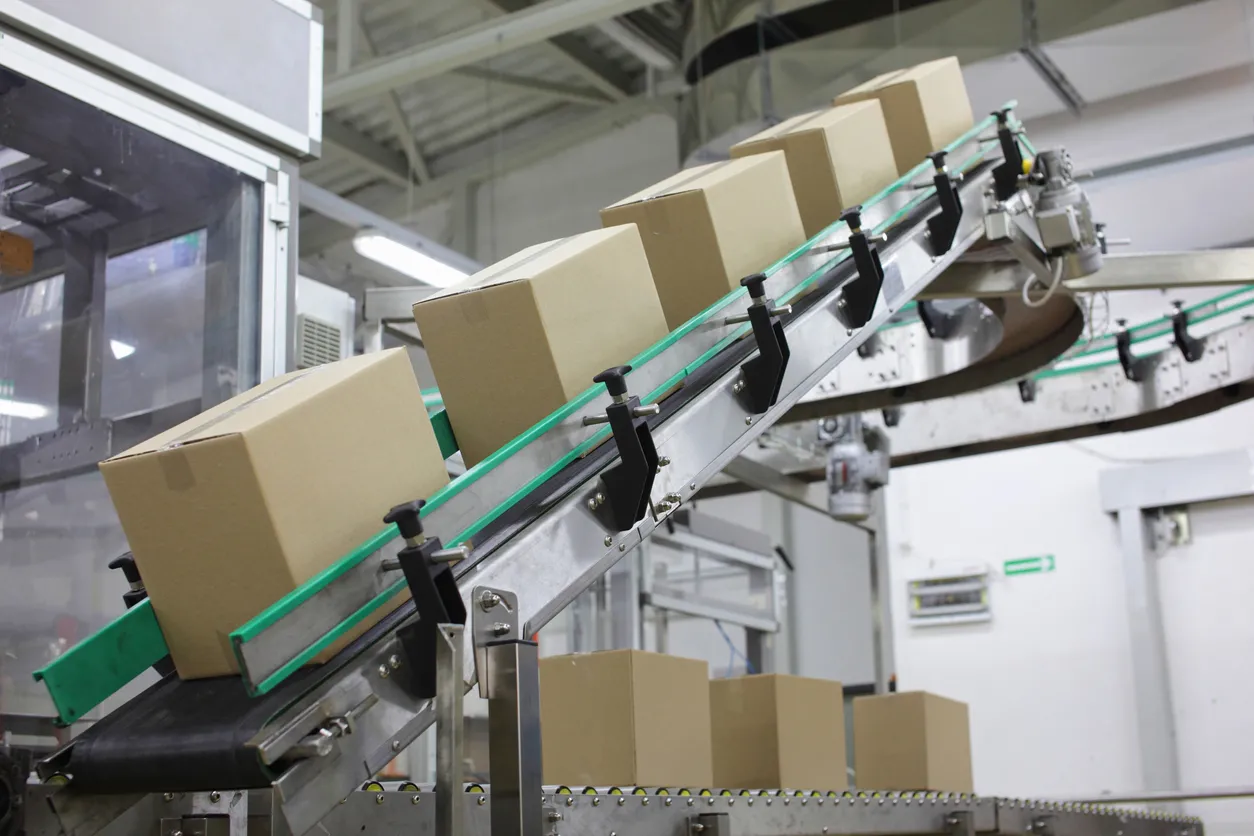Outbound sortation systems separate and route parcels, boxes, cartons, polybags, and more from the point of pack-out to the dock for shipping. Fed by conveyors and equipped with a variety of sensors and controls, outbound sortation systems identify, merge, induct, transport, and organize the packages so they arrive at the correct area for their next move. This could be pre-sorted into bulk gaylords for middle-mile pickup by a common carrier, routed to an over-the-road trailer or last mile delivery truck for floor stacking, or sent to a palletizer for bulk store replenishment.
Key Considerations in Specifying Outbound Sortation Systems
There are a variety of outbound sortation system types in the market. System integrators like DCS consider a variety of factors when selecting the most appropriate one for an operation. These factors include:
- The characteristics of the handled items. This includes dimensions, weights, packaging types, and the degree of item uniformity or diversity.
- The desired throughput rate of the operation. Some sorters are optimal for high throughput applications; others are better suited for lower volume handling needs.
- The way items are inducted (fed) onto the sorter. There are two primary kinds of flow: bulk (a jumble of multiple items at one time) and singulated (one item at a time). The preferred type of induction will often dictate the type of sorter used.
- The number and type of sortation destinations. Some sorters can support a high number of drop points, such as operations sorting into gaylord bins; others are more appropriate for routing of items onto single lines for manual handling, such as routing to dock doors for floor stacking in a vehicle.
- The degree of manual handling planned for the facility. Some operations are already heavily reliant on manual processes and intend to maintain staffing levels that support decanting of items onto a sorter by hand. Others, particularly those that have struggled to attract and retain qualified labor, are more likely to prefer an automated or robotic induction system.
- The limitations of the facility. Greenfield construction can generally accommodate any type of sortation system. Adding a sorter to an existing, brownfield application may require engineering the solution around unusual structural features or spaces. Different sorters offer different degrees of design flexibility.
Also often influencing the type of outbound sortation system selected is the level of familiarity a company has with it, and the amount of automation they wish to deploy. That is to say, an operation that’s more accustomed to a manual process may prefer a less complex sortation system, whereas one that’s already invested in sortation may be more comfortable with a higher degree of automation.
Types of Outbound Sortation Systems
The following provides a high-level overview of different outbound sortation systems. More information about sorters is available from the Conveyor & Sortation Systems (CSS) industry group of MHI, which offers a variety of publications about this type of material handling equipment.
- Cross Belt: Comprised of a series of separate, motorized belt conveyor sections oriented to impel individual loads off the left or right side of the sorter’s travel direction when activated. They handle a variety of product dimensions, weights, and packaging types, as well as can dispense items into a high number of destinations along the line. When necessary, a larger item can ride atop two or more sections. Additionally, because of the inherent flexibility in their construction, these sorters integrate most easily into an oddly shaped building. Cross belt sorters support high-throughput applications, handling 12,000 to 18,000 items per hour. Typically configured as a continuous loop, dividing a cross belt sorter into zones or quadrants achieves higher rates. Each portion of the sorter has separate induction and discharge points; through intelligent control, items are routed to discrete sections to minimize the time spent on the sorter.
- Bomb Bay: Also sometimes called Split Tray, these sorters feature individual, dual-paneled trays that open from the center (like a trap door) to drop the items riding on each. Their action is similar to military bomber planes whose split doors opened to jettison their payload. Items drop into a receptacle or onto a chute or takeaway conveyor. They are most frequently used for sorting handling soft, polybagged items such as apparel that the fall won’t damage. Throughput rates range from 6,000 to 14,000 units per hour.
- Tilt-Tray: A continuous succession of individual trays that tilt to the left or right and use gravity to discharge their load. Tilt-tray sorters support a broad range of throughput requirements, from low to high volumes, at rates ranging from 8,000 to 15,000 parcels per hour. They are ideal for dispersing items into multiple destinations along the sortation line. Most frequently used for sorting of small envelopes and polybags, major parcel carriers often utilize these.
- Sliding Shoe: This sorter’s surface incorporates a series of slats with a succession of individual bumpers, called shoes, that slide across the slats independently. As needed, the shoes travel over the slats, contacting an item to push it off the main sorter line to its next destination. They are ideal for high-throughput handling of fairly consistent, boxed items at rates ranging from 7,500 to 15,000 units per hour. They work best with rigid packaging that is unlikely to become snagged in the sliding shoe mechanism.
- Push-Tray: Individual trays each outfitted with one or more mechanical push bars that move across the surface of the tray to push the item off the side. Designed to handle a broad variety of item weights, sizes, and packaging styles, these sorters often handle smaller items. Push-tray sorters support a broad range of throughput requirements, from low to high volumes, at rates between 6,000 and 14,000 items per hour. They are frequently deployed in applications that require multiple sortation destinations.
- Activated Roller: Free-spinning rollers embedded in a modular plastic belt that move independently of the belt’s travel, enabling the sorter to route a package in any direction. Activated roller sorters accommodate a broad range of product diversity, from heavy cartons to lightweight polybags, at throughput rates ranging from 3,000 to 12,000 per hour. They are ideal for applications handling multiple product packaging, sizes, and weights.
Looking to add an outbound sortation system to your operation? Need help figuring out which one is the right choice for your mix of product and throughput goals? DCS’ system design engineers are happy to help. Connect with us.
Author: Bob Schweitzer, Systems Engineering Resource Manager, bob@designedconveyor.com
